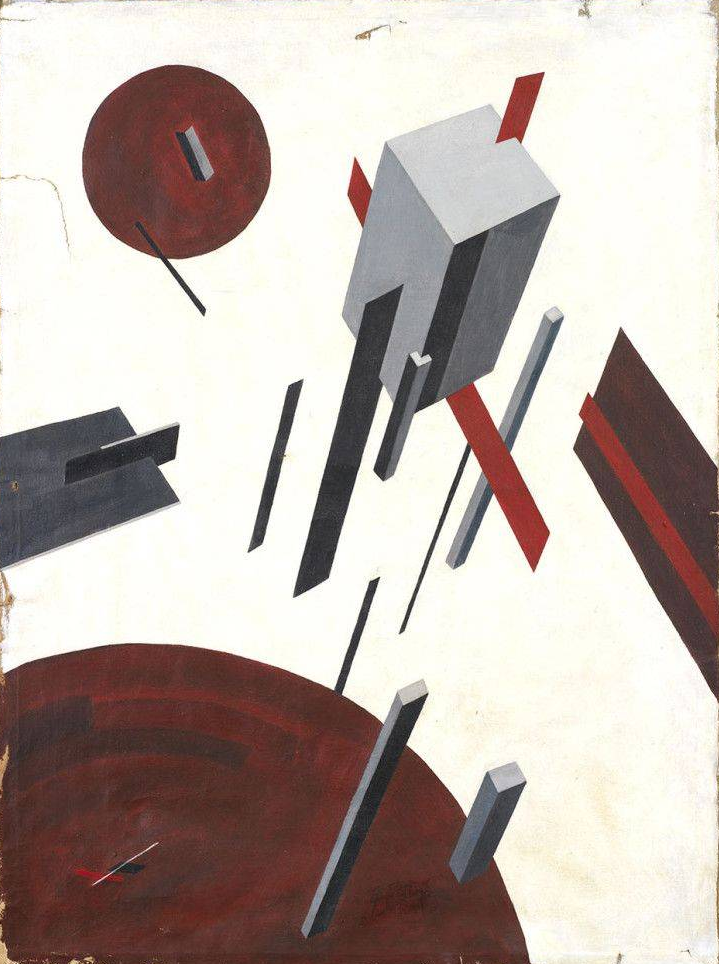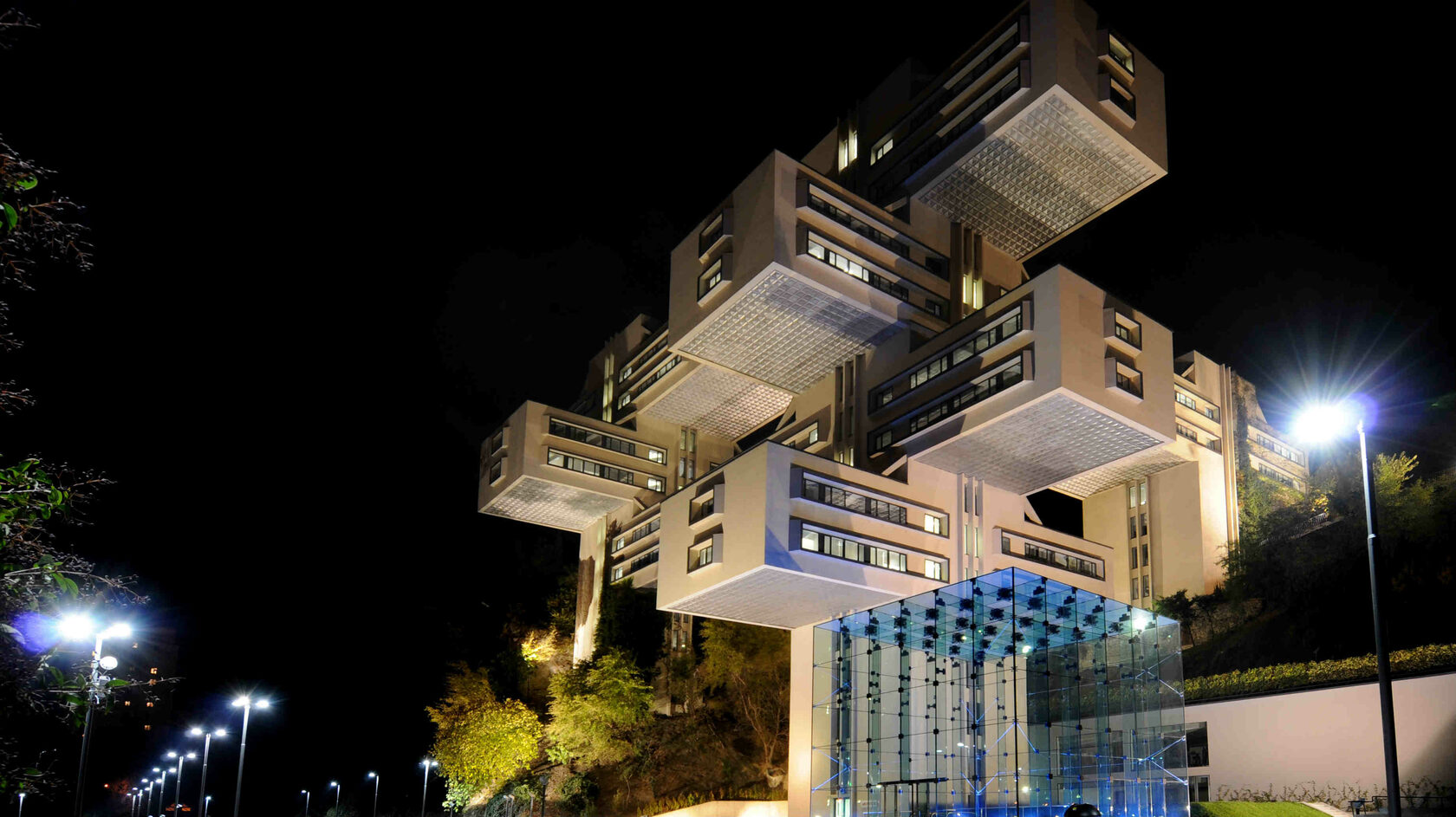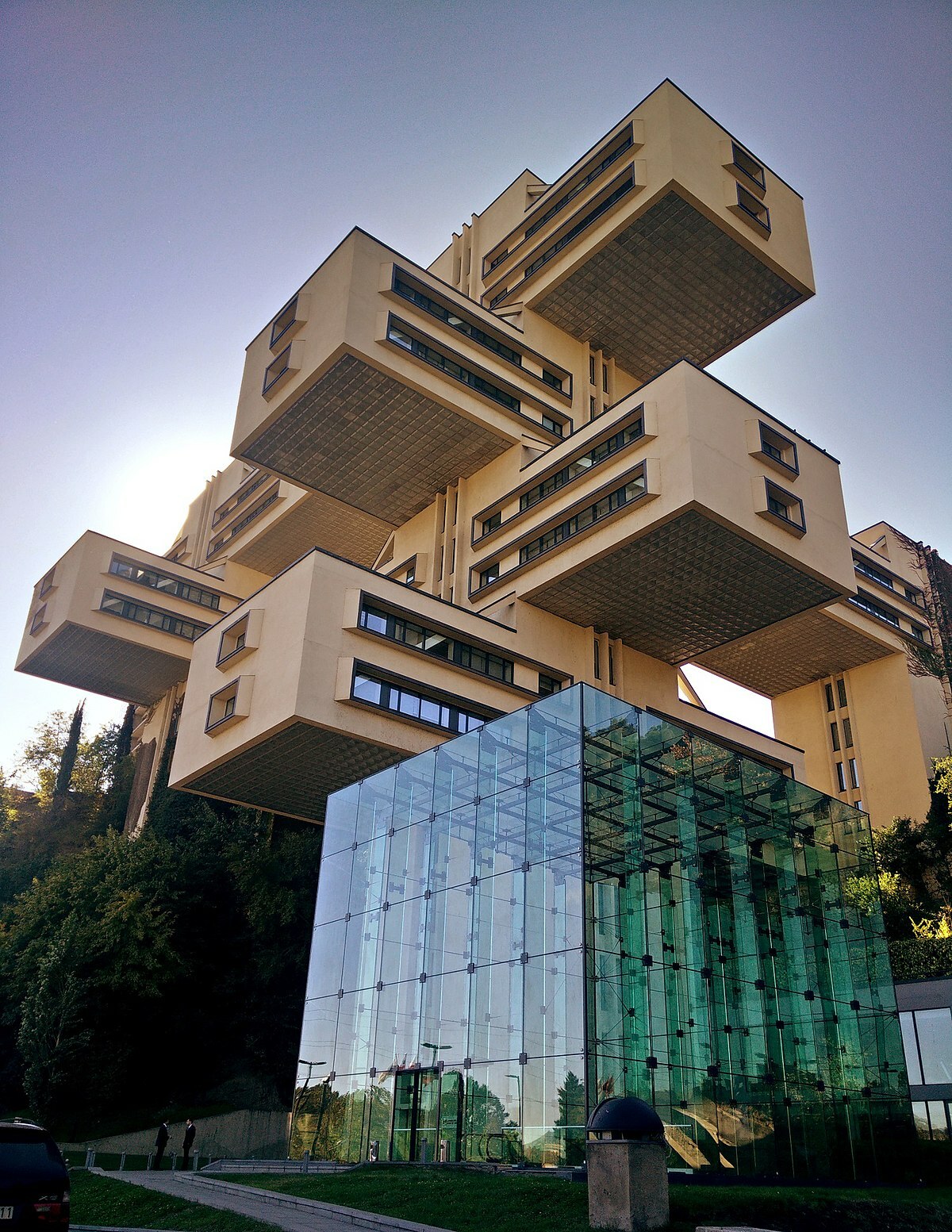SupremePunk #044

Blocks of the future
This Punk is inspired by CryptoPunk #9894 and artworks of Lisitsky. This Punk completely refers to the style of futurism, because the avant-garde, and hence suprematism, came out of futurism, so in the early works of many artists they pay a tribute to this genre. That is why similar colors were chosen: the combination of red, gray and blue - one of the most popular for the style of futurism. The very composition of the figures combines the ideas of an utopian city of the future, in which urbanism and concrete walls displaced everything human, and the minimalism endured by Suprematist artists. This is why the buildings of Soviet futurist architects were chosen as one of the sources of inspiration. This included the former building of the Ministry of Highways of the Georgian SSR (one of the USSR republics).

El Lisitsky — Proun 5 A, 1919
It is the most famous modernist building in Tbilisi and one of the most popular examples of Soviet architecture in the world. This building, as if composed of giant concrete beams, is interesting not only for its appearance, but also for its construction history and architectural philosophy. The Minavtodor is almost the only individual project in Georgia for the entire period of the Soviet Union. Its construction is the merit of George Chakhav. Designing the Ministry, the architect served as Minister of Road Construction. That is, he was both the chief architect and the client at the construction site. Chakhava also chose the picturesque steep bank to implement the project. It seemed to him that the difficult landscape of the precipice would make it possible to realize the idea of the "city of space". The main difference of the 'city of space' is to use as little of the earth's surface in the construction as possible.

Building of the Ministry of Highways of the Georgian SSR
This allowed the building to become part of an ecosystem, something like a tree, where the crown is the functional above-ground parts of the building and the vertical supports and beams are the trunks. Under such a "tree" the flora continues to exist. It was assumed that such urban planning would improve the psycho-physical state of city dwellers. Magazines almost all over the world printed pictures of the extravagant building of the Ministry of Roads, built in 1974 in Tbilisi - Ultramodern, with strongly protruding cantilevered floors, adopted by the authors of complex volume-planning and structural system perfectly fitted into a very complex terrain, well related to the environment, created an interesting silhouette. Five two-storey parallelepipeds stacked in the shape of a lattice or diagonal, standing on strong supports and resembling a figure from a children's construction set.

Building of the Ministry of Highways of the Georgian SSR
There are elevators and stairs in the vertical volumes of the building. The total area of the building is about 11 thousand square meters and at its highest point it reaches 18 floors. The main task of the architects was to have minimal impact on the surrounding landscape. In addition, the building meets the five principles of functionalism formulated by Le Corbusier. Chakhava and Jalagania tried to use the same design of the house on pylons in housing construction, but their project to develop a slope in the Varazishevi Gorge in Tbilisi was not implemented. The Ministry of Roads was noted not only by the national and foreign media, but also by the party leadership of the country - the work was awarded the Prize of the USSR Council of Ministers. It is one of the two modernist buildings in Tbilisi, which was officially granted the status of an architectural monument.

Buy

Gallery:
CryptoPunk #9894 that has been taken as a base

Your transaction is in progress

You have connected to the wrong network

Transaction is successful!


